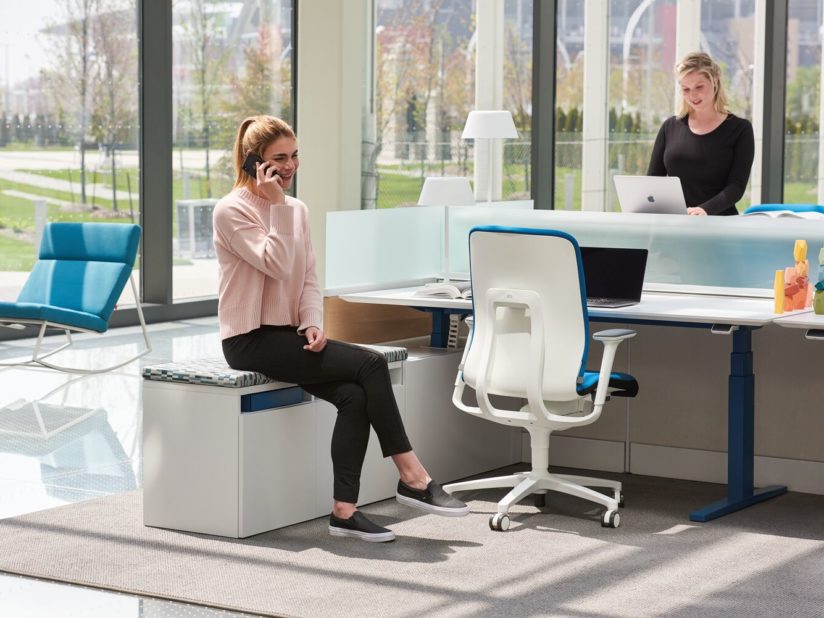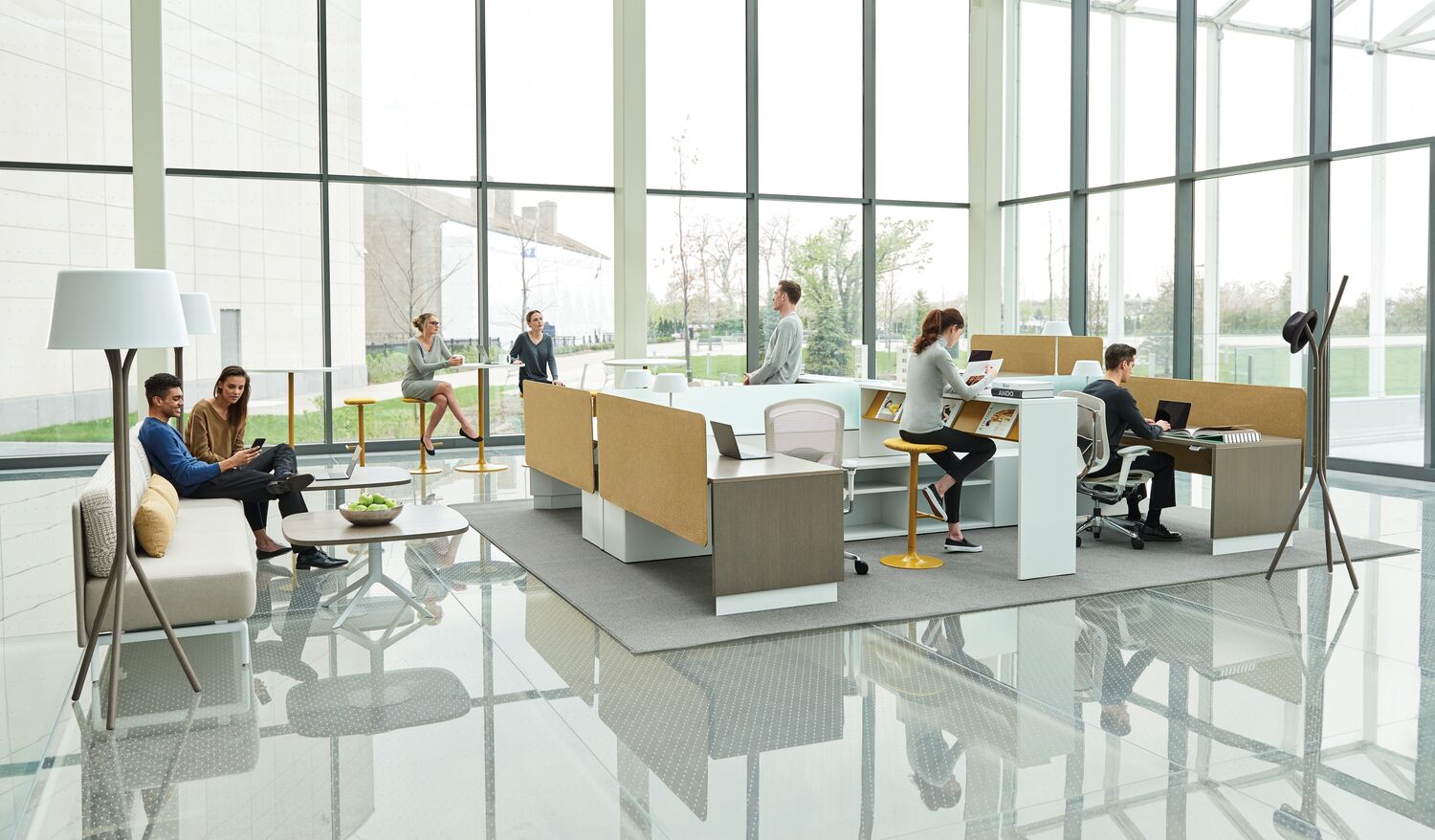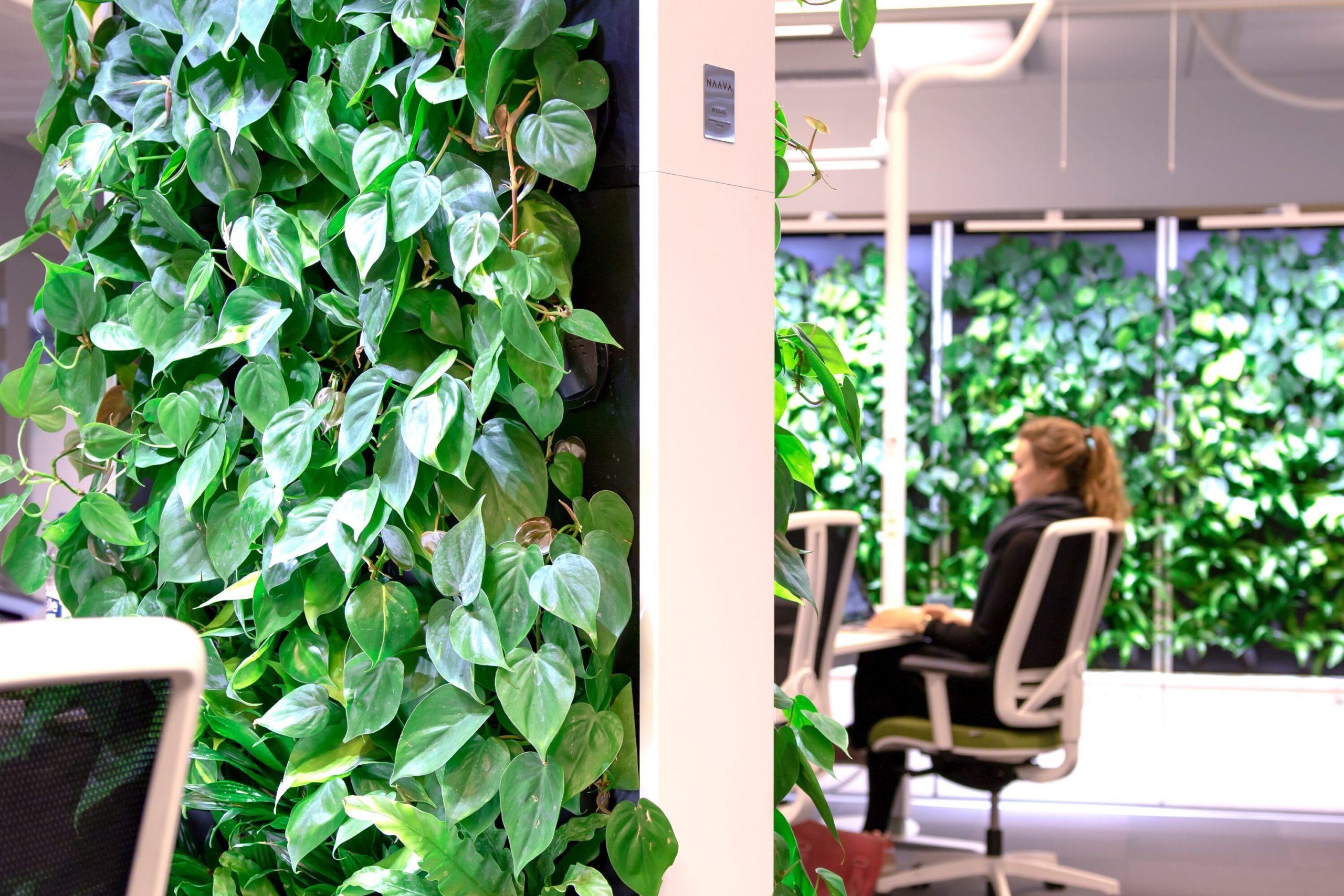
Office Furniture and Design Trends in 2020: Changes Over the Decade
A new decade has officially arrived! We’ve seen some significant changes in business over the past 10 years, from a spike in social media influence and technological dependence to the rise in sustainability and workplace wellness. If the 2010’s gave any indication of what to expect in 2020, we can anticipate more progressive changes in technology, workplace dynamics and business tactics. It’s important to keep your workplace current to remain competitive and attractive to the new generation of talent. Here’s a list of how the past decade has influenced modern-day office trends.
Integration of Technology in the Workplace
The role of technology has drastically changed in the workplace over the past decade. Everyone carries a smartphone and many offices are opting for laptops instead of desktop computers, allowing more employees to work on the go. This change can be observed in office furniture trends as more USB and power outlets are being integrated into workplace tables and chairs. As our technological dependence has increased, businesses are making technology more accessible in the workplace by incorporating more charging ports and screens to support video conferencing and presentations. It’s time to make space in the workplace for technology and invest in supportive accessories, such as wireless charging and media centers.
Three H | Woodstock
Creating a “Green Office”
The environment has been a topic well before the start of the decade, however, the idea of creating a “green office” took off in 2010. Online platforms have allowed for more open conversations on climate change and environmental concerns. The increase in awareness generated a demand for more eco-friendly products, which trickled down into office design and, more specifically, office furniture trends. Many furniture manufacturers made an environmental commitment to conserve energy, utilize sustainable resources and reduce overall waste. Even window covering manufacturers, such as Solarfective, have developed sustainable shades with technology to utilize natural light and reduce energy for climate control. The green office has gained momentum over the past decade and shows no signs of slowing down.
Green Furniture Concept | Radius Series
Incorporating Activity-Based Work Spaces
Office dynamics have changed as more employees work remotely with flexible work hours. We have the choice to take our work with us and are no longer constrained to our desks. As a result, people want more options throughout their workday, which is why there’s a steady increase in popularity for flexible work areas and community spaces. Workers don’t have to isolate themselves in a workstation or sit in a conference room for meetings. Designers are creating more multi-use spaces that are a mix between work and play. Flexible work areas can also be viewed as activity-based work spaces where employees are given the choice to change their work environment as they engage in different activities. The idea is to provide a place that can be used for focusing on private work, lounging on breaks, collaborating for informal team meetings and anything else your company requires! Incorporate comfy lounge seating, thought boards, private booths and screens to make the most of your space.
Teknion | Sprout Stool
Prioritizing Office Health & Wellness
Workplace health and wellness has really taken off this decade. Everyone from large organizations to small businesses are now taking major strides in incorporating workplace wellness practices to keep employees healthy and productive. There’s also a high demand for ergonomics in the office, which is leading to some innovative technologies in the market. More offices are incorporating height adjustable desks, customizable chairs, monitor arms and smaller ergonomic accessories— such as keyboard trays, foot stands and anti fatigue mats. Organizations are responding to employees’ demands by investing in supportive office furniture, but this office trend doesn’t stop at ergonomics.
There’s more conversation on the importance of mental health and how our environment impacts it. Even the World Health Organization officially recognized workplace burn-out as an “occupational phenomenon”. As a result, businesses are integrating biophilic design into their office by including more natural elements to reduce stress and improve mental health. These natural features can range from incorporating natural wood, plants and light. It can be seen in office furniture trends with more pieces being featured in natural wood and more window coverings utilizing natural light. In particular, plant walls (or natural walls) are gaining momentum in office trends to purify the air and improve humidity. Simply put, employees’ well being are becoming a priority in modern office spaces
Teknion | Naava
We’ve seen some significant changes in the last decade. The workplace is evolving. There’s more intention behind office designs and products. Employees are more mobile, connected and conscious than ever which is shaping the modern-day workplace. Keeping your office environment flexible and open to change in the next decade will allow you to become receptacle to new innovations, attract the new generation of talent and give you a competitive advantage.
Looking to incorporate the latest office furniture trends into your workspace? Contact us and one of our furniture experts will help you find the perfect solution for your office space.



